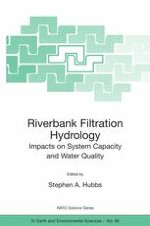Riverbank Filtration (RBF) has gained popularity in the past decade as an excellent source of high quality water for public water supply. This text compliments the existing literature on RBF water quality, and provides much-need guidance in the design and operation of RBF facilities. RBF has proven effective in many hydrogeological settings worldwide, and can be an excellent solution to water supply problems in both developed and developing countries.
Topics covered include surface stream hydrology, particle clogging, and biological/geochemical processes. Data and case histories are provided from dozens of installations, providing much-needed practical information regarding RBF design, operation, and performance.
This book provides the necessary tools to evaluate potential RBF sites, and is a must-have if you are considering RBF as a source of water supply.
